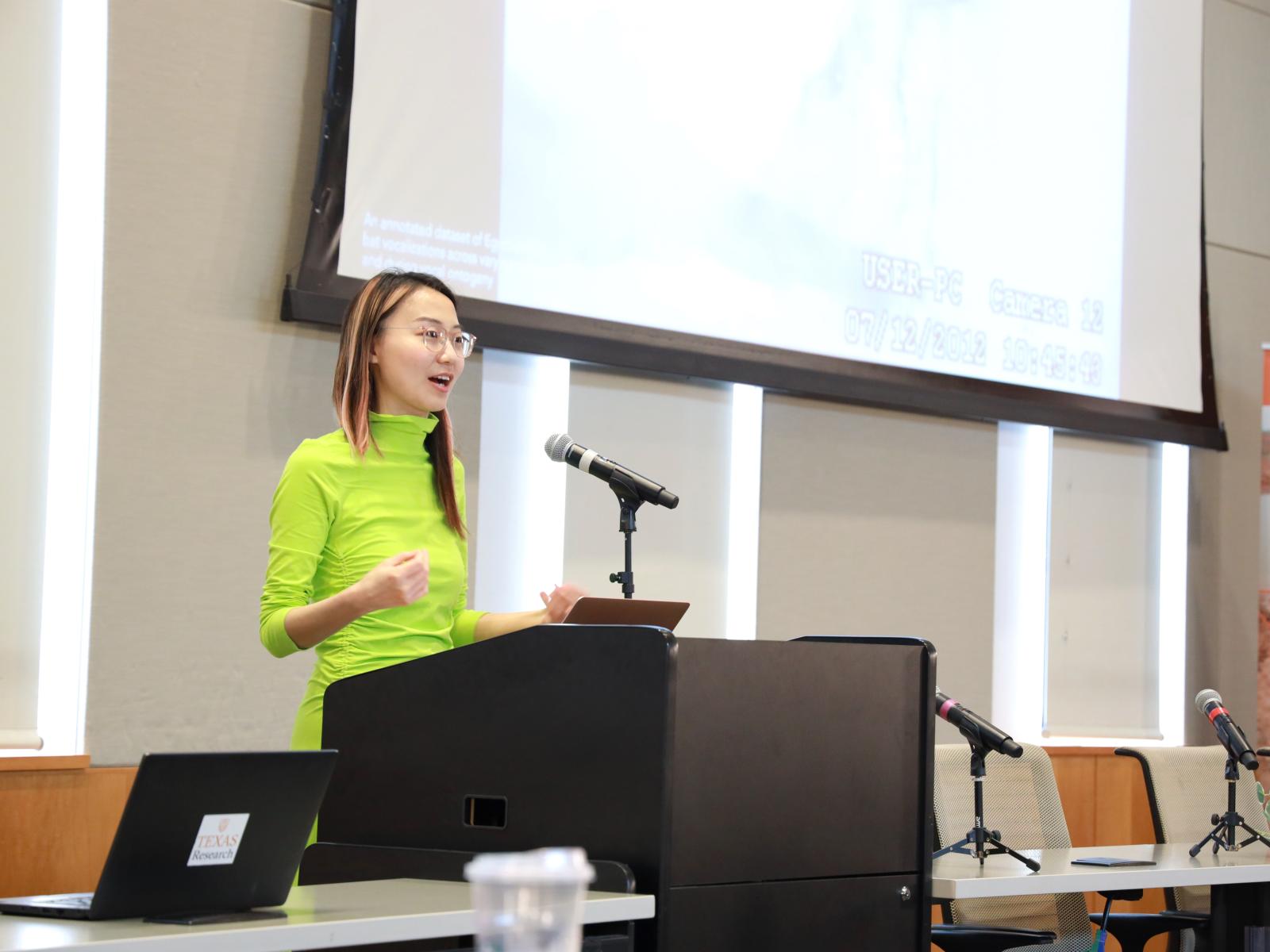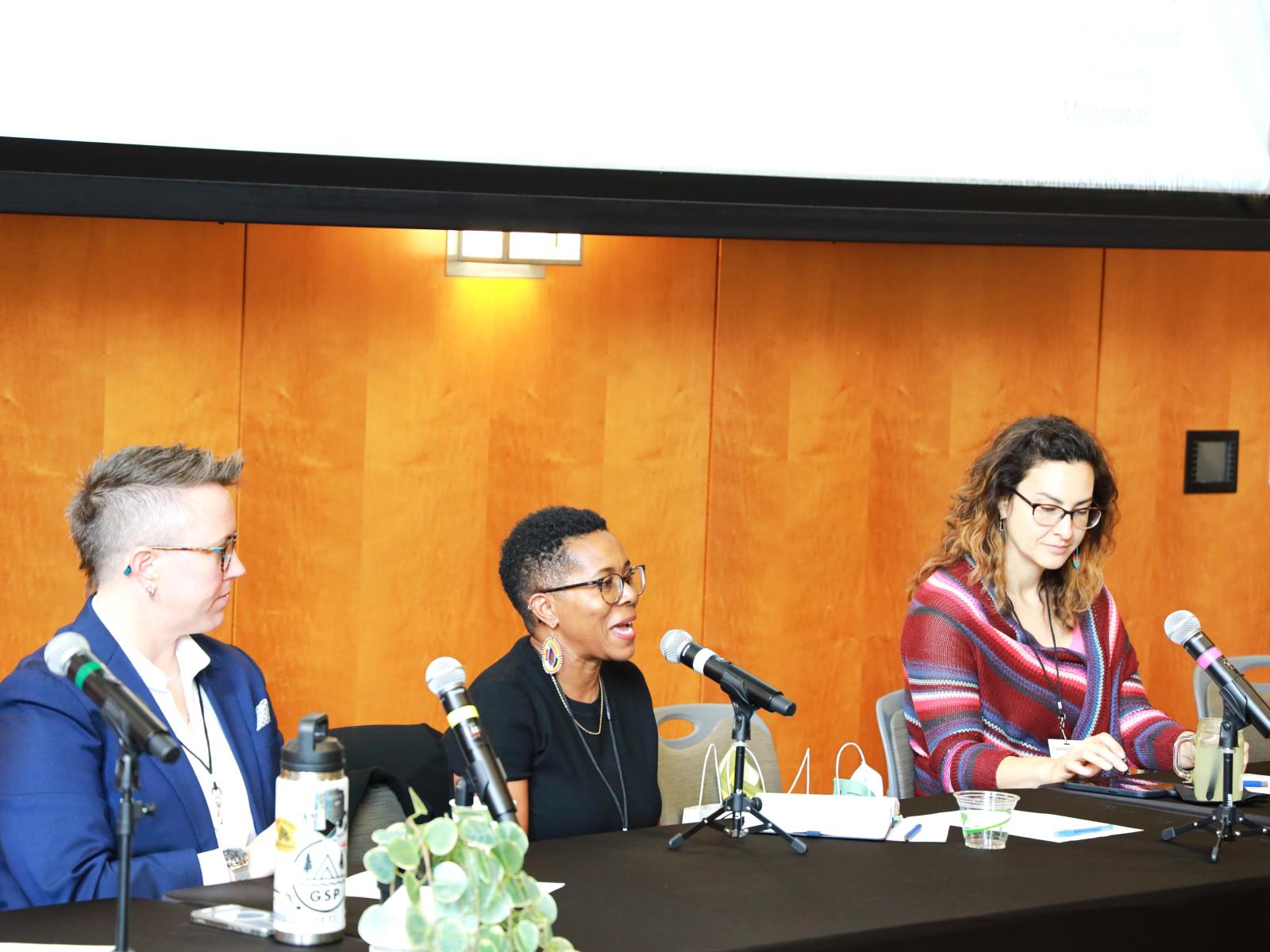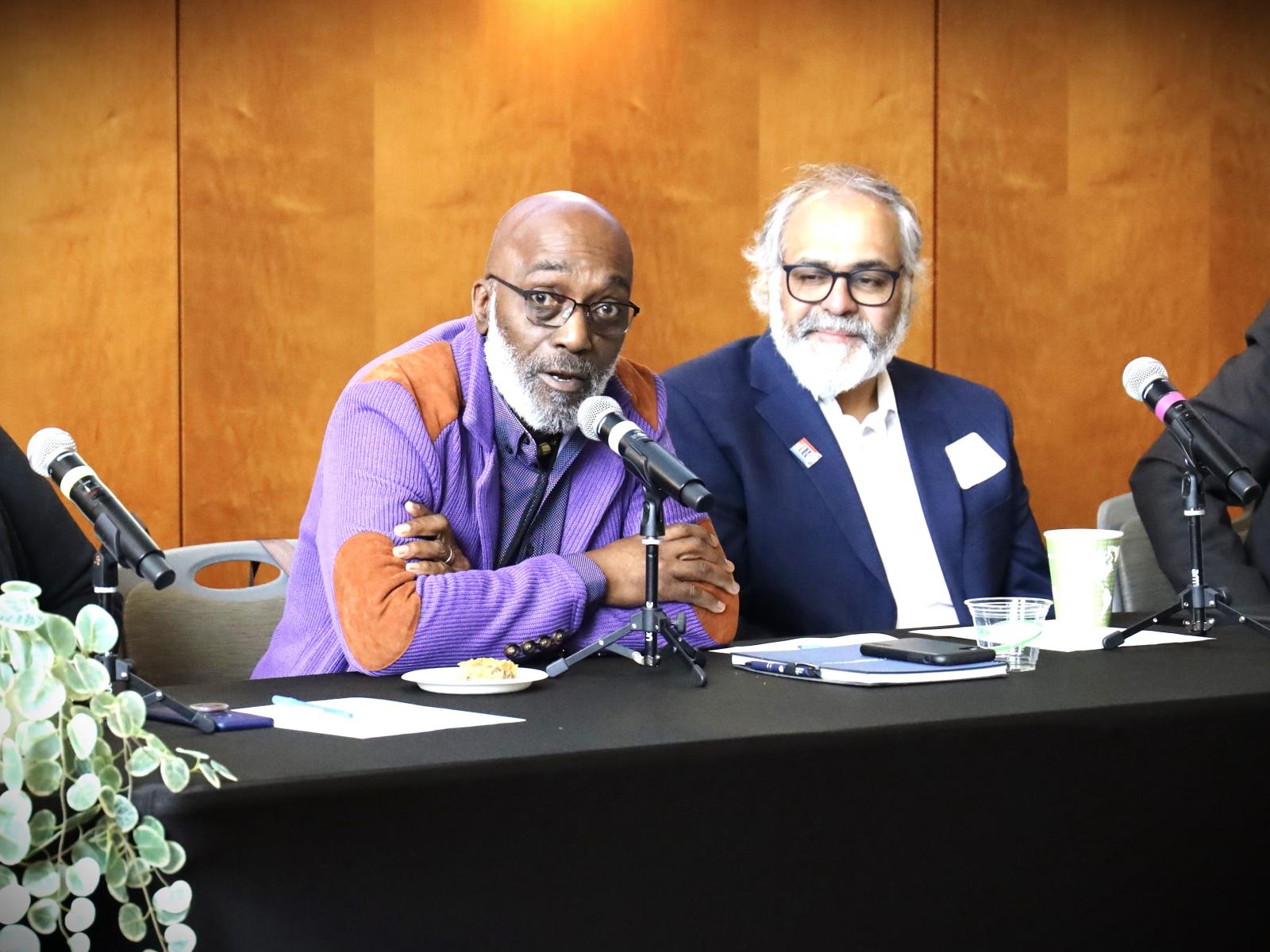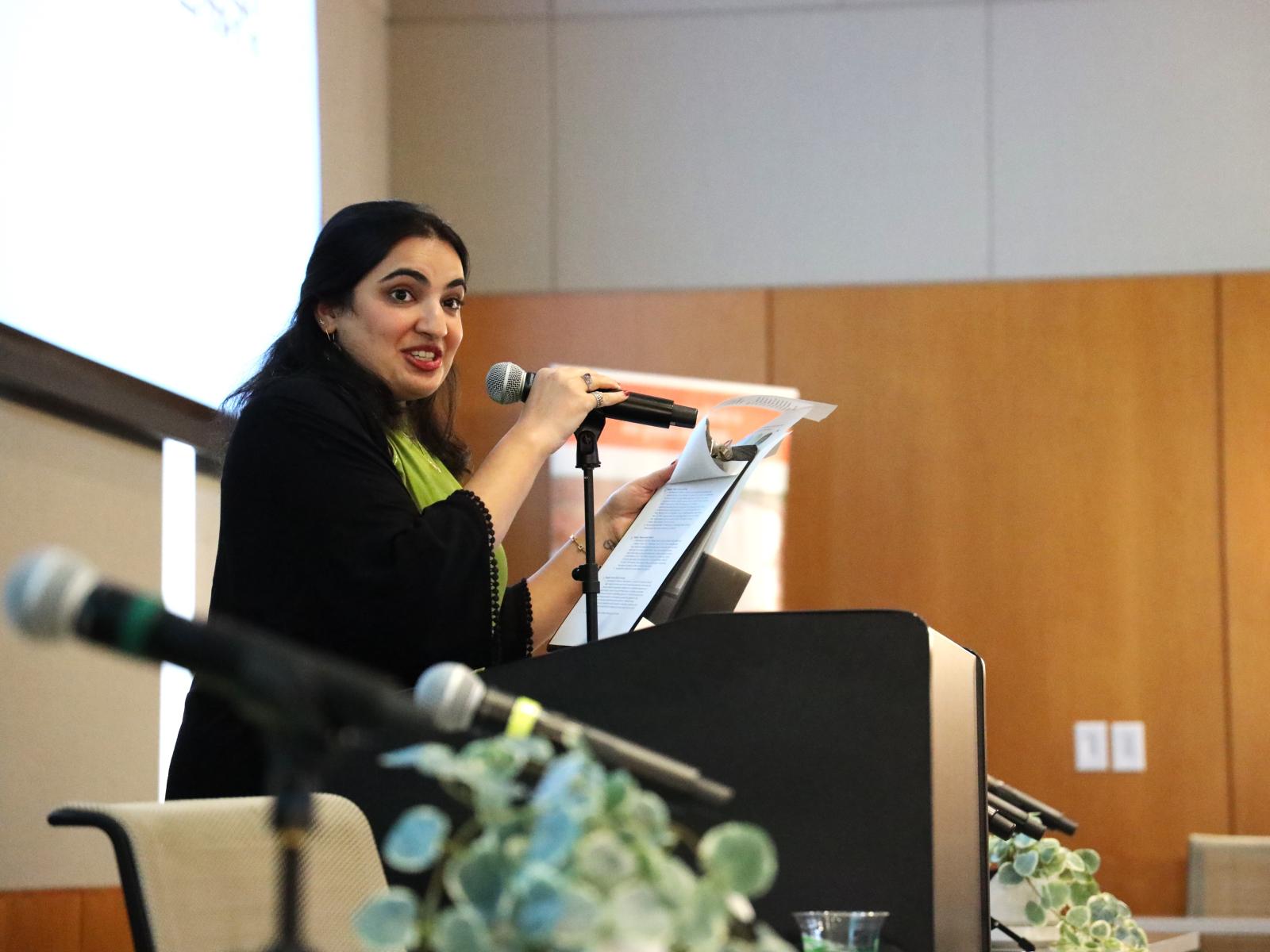From February 27 – 29, Planet Texas 2050 held its annual symposium. If you couldn’t make it, fear not: we’ve compiled highlights of some of the compelling and surprising things we learned! (You can watch full videos of the sessions on our YouTube channel.)

1) We’re at an inflection point in the fight against climate change, and it’s not too late to win… if we act now.
Opening keynote speaker Jonathan Foley, the executive director of Project Drawdown, kicked off the symposium with a bang:
We’re in a race between two very different versions of the future: one where we don't get it right, where we continue to pollute and pollute, and we don't do what we can to stop further climate change from happening — where there’s a much warmer planet with destabilized weather systems, degraded natural resources and vulnerable people being hit left and right. We're seeing some of that now, but it could get a lot worse — and this is a future still very much on the table.
But there's another future, and this is the one I believe in. It’s a world where we get it right. Sure, we didn't avoid all climate change, but we avoided the worst of it. We heard the call, and we stood up and did what was necessary to transform the world to not only prevent the worst aspects of climate change from happening, but at the same time build a better world in the process, a world that is more resilient, more prosperous, more secure and more equitable.

2) Humanity needs to be less egocentric and more ecocentric.
Assistant professor of design Jiabao Li addresses climate change and environmental degradation through her “ecocentric” art. “Human-centric thinking is causing us to damage our planet and other forms of life in ways that cannot be repaired,” she said, noting that a species goes extinct every nine minutes.
In her presentation, “Creating with More-Than-Humans,” Li discussed the surprising aesthetics of squid and “Squeeker: The Mouse Coach,” a training app Li developed, which she recently used to train for — and finish! — the Austin Half-Marathon in February. (You can download the app yourself for free on Google Play and Apple App Store.) “Our challenge for the next decade will be to reimagine how we live through the lens of the environment to shift our perspective, our perspective from human-centric, egocentric, profit-driven thinking to a multi-species, eco-centric worldview,” Li said. “And this requires us to fundamentally change our perspectives regarding our views of nature and hierarchies of intelligence.”

3) There can be tension between environmental regulations and affordable housing needs, but we can address both if we think long-term and prioritize equity in our development.
One of the highlights of day two was the panel discussion, “Space/Time Conflicts in Planning: Equity, Affordability, and Environmental Challenges,” where a diverse group of academics, city officials and community organizers from Austin discussed the complex relationship between ever-worsening flooding, affordable housing and real estate development.
Katie Coyne, the City of Austin’s environmental officer and assistant director of the Watershed Protection Department, incorporated ideas from eco-feminism and queer ecology to suggest that environmental damage and socioeconomic inequities need to be approached together. She also pointed out that our tendency to reduce complex issues down to binaries can unnecessarily pit environmental regulations and affordable housing against each other.
The City’s community displacement prevention officer, Nefertitti Jackmon, emphasized the connection between environmental hazards and social justice. “The thing we want to protect is the erasure of community, an erasure of their culture, traditions, history — an erasure of the knowledge and people who live in these areas,” Jackson said. “And what does that mean to Austin's identity as a whole, when we don't seek to protect some of the most vulnerable populations, populations that make the city a richer place, as we weave together the knowledge and histories of so many different people?”
As one way to build resilience, Jackmon proposed "capital stacking" for families, similar to how developers use it. “Why can't we use capital stacking for families and communities so that they can be resilient?” Jackmon said. “There's so much research that shows that if families and households are stably housed, you can reduce healthcare disparities and educational inequity. And for me, I see that as fundamental to our response as a city government. We are public servants. That is our responsibility.”
Carmen Llanes, the executive director of Go Austin!/Vamos! Austin, was equally eloquent and passionate, arguing that affordability is about more than just rental rates; it’s about quality of life, “having somewhere you can put your feet on the ground, being able to walk to where you need to go, access food, people can visit you, you actually have connection to your family or your friends or your chosen family,” Llanes said. “Nobody deserves lower standards, because when the corners get cut, we know who gets hurt.”
Llanes proposed solutions like community land trusts and long-term planning to address the housing crisis caused by wealth inequality and real estate speculation. “The urgency needs to be moderated,” she said. “We can plan long-term. We have an infusion of federal funds through the Inflation Reduction Act actually aimed at restoring some funding to disinvested areas. That could go really right or really wrong. So let's demand more, let’s ask for what we need. We can build some of the solutions into the problem. We can climate retrofit, take pressure off our stormwater systems, take pressure off our grid and actually build affordable housing if we get everybody to the table and start stacking. I'm still optimistic. I think we can do it.”

4) Extreme heat affects us all, but it affects marginalized communities the most.
As the Earth continues to warm, summers get hotter, and extreme heat is now responsible for more deaths in Texas than every other weather event combined. It was only appropriate, therefore, for one of the sessions at the symposium to focus on extreme heat in Central Texas and beyond.
Kenneth Thompson, an Austin native who has worked as a community organizer for decades, described the reality of who suffers most when the thermometer hits 100+:
When marginalized communities are impacted by an event such as the heat [wave] of 2023, there are cascading episodes that take place in these families. We see the homeless every day, and collectively as a community we respond and try to find places for them to be, and we do. But it's the ones we don't see that struggle most, that maybe end up homeless at some point because of a cascade of events [related to] heat…. You're in a neighborhood, in a house where you don't have the same insulation, and so your electricity bill is higher than others. And you start talking about the ripple effects — do you have family members that can help offset those costs? And then, what does that do for that marginal family that does not have those resources? We like to talk about mental health, but can you imagine what it's like to be in a hot box? What choices do you make? How do you sleep? How do you function?

5) Youth are driving climate action both locally and globally.
The closing keynote speaker at this year’s symposium was Pooja Tilvawala, the founder and director of Youth Climate Collaborative (YCC), a global hub that offers tools and programs designed to engage and empower young people and communities around the world to take action. At 28, she is part of the largest youth cohort in history — there are 2.4 billion young people aged 10 – 29. "With a growing youth population, there's increased pressure on natural resources, exacerbating greenhouse gas emissions and environmental degradation,” she said. “Fortunately, though, it's not all doom and gloom. Youth are often at the forefront of advocacy and activism, driving awareness and demanding action on climate change, making their demographic pivotal to shaping current and future sustainability efforts."
Tilvawala was joined by a panel of local youth activists, including Alexia Leclercq, the co-founder and executive director of Start:Empowerment, a rapidly growing youth- and BIPOC-led climate education nonprofit, and Maryam Zoweil, an Austin high school student and director of data analytics at the Institute for Youth in Policy, a San Francisco-based nonprofit dedicated to policy change through youth empowerment.
The last sessions of the day included presentations with youth co-researchers representing Frontline Community Partnerships for Climate Justice and Drama for Schools Participatory Action Research for Climate Change Resilience projects. Elementary and high school students from Austin acted out scenes they wrote themselves about how climate change affects them directly. Afterwards, Rio Grande Valley high schoolers’ photovoice exhibit, "Looking to the Future: Youth Perspectives on the Environment," was on display. "Looking to the Future” sheds light on environmental challenges and injustices faced by communities in the Rio Grande Valley, as seen through the lens of local high school students.



